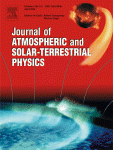
linkedin post 2020-07-08 03:24:46
THE IMPROBABLE PROBABILITY. “The probability of suicide, stroke, accidental vehicle death, accidental death, cancer, leukemia, and hypertension in humans may be provoked by increased geomagnetic activity.” http://www.sciencedirect.com/science/article/pii/S1364682614000339 View in LinkedIn
